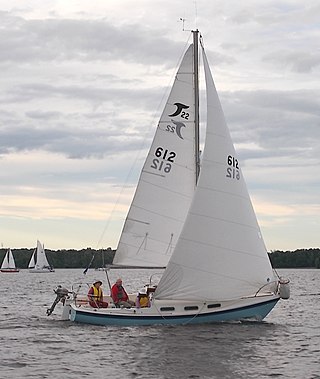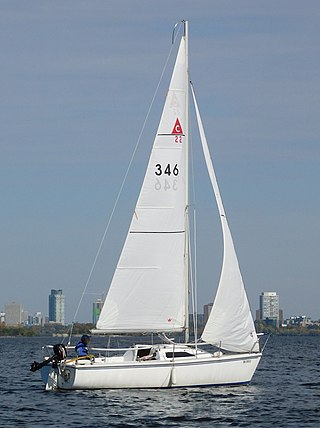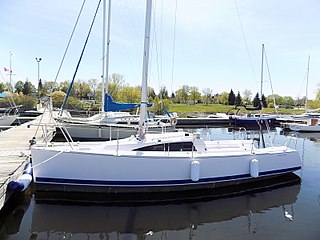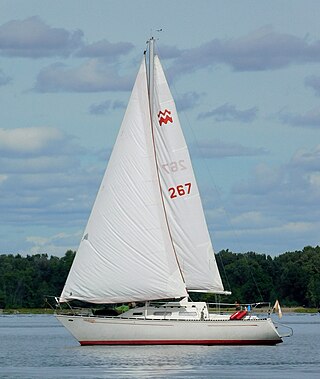
The Pearson Ensign, or Ensign 22, is an American trailerable sailboat that was designed by Carl Alberg as a one-design racer and day sailer and first built in 1962. It is the largest full-keel one-design keelboat class in the United States.
The Tempest 23 is an American trailerable sailboat designed in 1962 by Philip Rhodes and Richard D. Carlson.

The US Yachts US 22 is an American trailerable sailboat, that was designed by Gary Mull and first built in 1979.

The Tanzer 22 is a Canadian trailerable sailboat, that was designed by Johann Tanzer and first built in 1970. The design went out of production in 1986.

The Tanzer 26 is a Canadian sailboat, intended for racing, day sailing and cruising. It was designed by Johann Tanzer and first built in 1974. The design is out of production.

The Capri 22 is an American trailerable sailboat, that was designed by Gary Mull and Frank Butler and first built in 1984.

The CS 22 is a Canadian trailerable sailboat, that was designed by John A. Butler and first built in 1971. The design is out of production.
The Cal 28 is an American sailboat, that was designed by C. William Lapworth and first built in 1963. It was originally marketed as the California 28.
The C&C 40 is a series of Canadian sailboats, that were all designed by C&C Design and first built in 1968.

The Catalina 275 Sport is an American sailboat, that was designed by Gerry Douglas primarily for racing and day sailing.

The Grampian 26 is a Canadian sailboat, that was designed by Alex McGruer and first built in 1967.

The Mirage 27 (Schmidt) is a Canadian sailboat, that was designed by Peter Schmitt and first built in 1975. The design is out of production.

The Mirage 27 (Perry) is a Canadian sailboat, designed by American Robert Perry and first built in 1982. The design is out of production.
The Hunter 240 is an American trailerable sailboat that was designed by the Hunter Design Team and first built in 1998.
The Pearson Electra is an American trailerable sailboat that was designed by Carl Alberg as a Midget Ocean Racing Club (MORC) racer and first built in 1960.
The Beachcomber 25 is an American trailerable sailboat that was designed by Walter Scott as a cruiser and first built in 1979.
The Freedom 25 is an American sailboat that was designed by Garry Hoyt as a single-handed racer-cruiser and first built in 1980.
The Hotfoot 27 is a Canadian sailboat that was designed by Doug Hemphill as racer-cruiser and first built in 1981.
The S2 9.2 is an American sailboat that was designed by Arthur Edmunds as a cruiser and first built in 1977.
The Colgate 26 is an American trailerable sailboat that was designed by naval architect Jim Taylor, as a racer and first built in 1996. Steve and Doris Colgate provided the concept and specifications.













